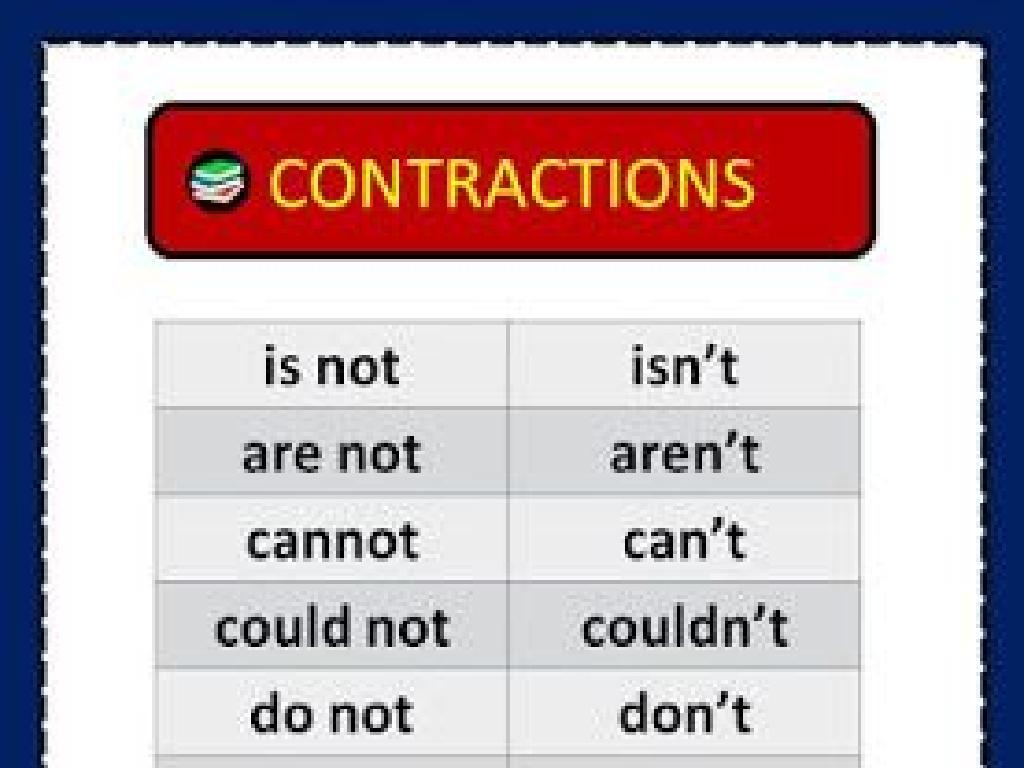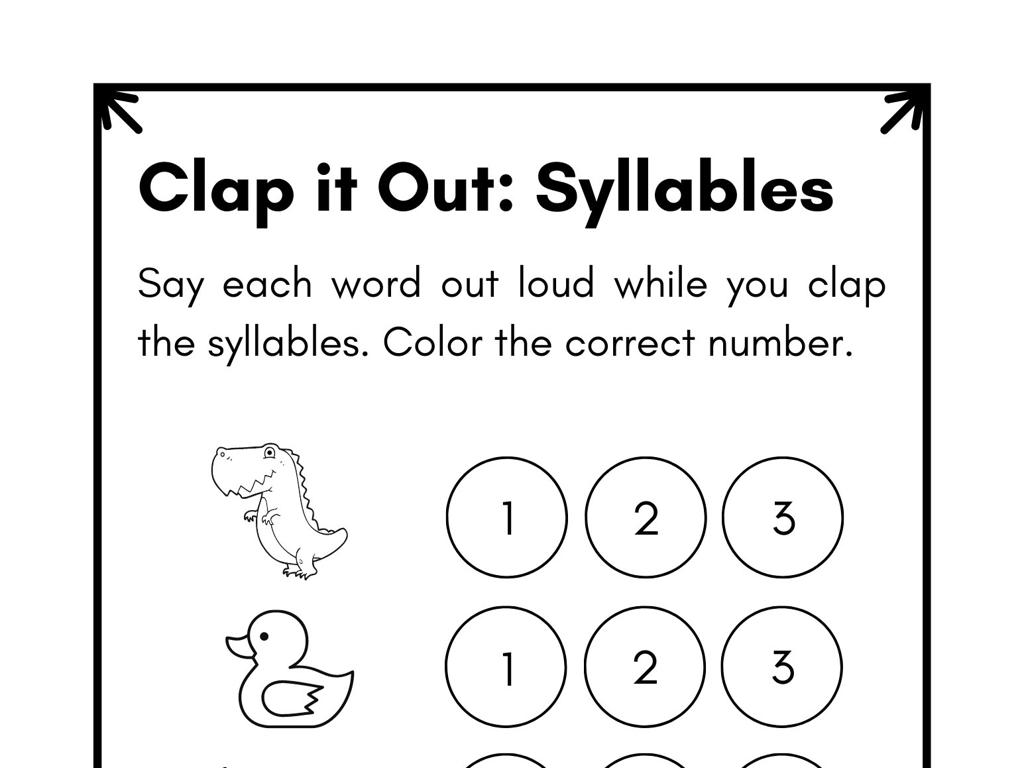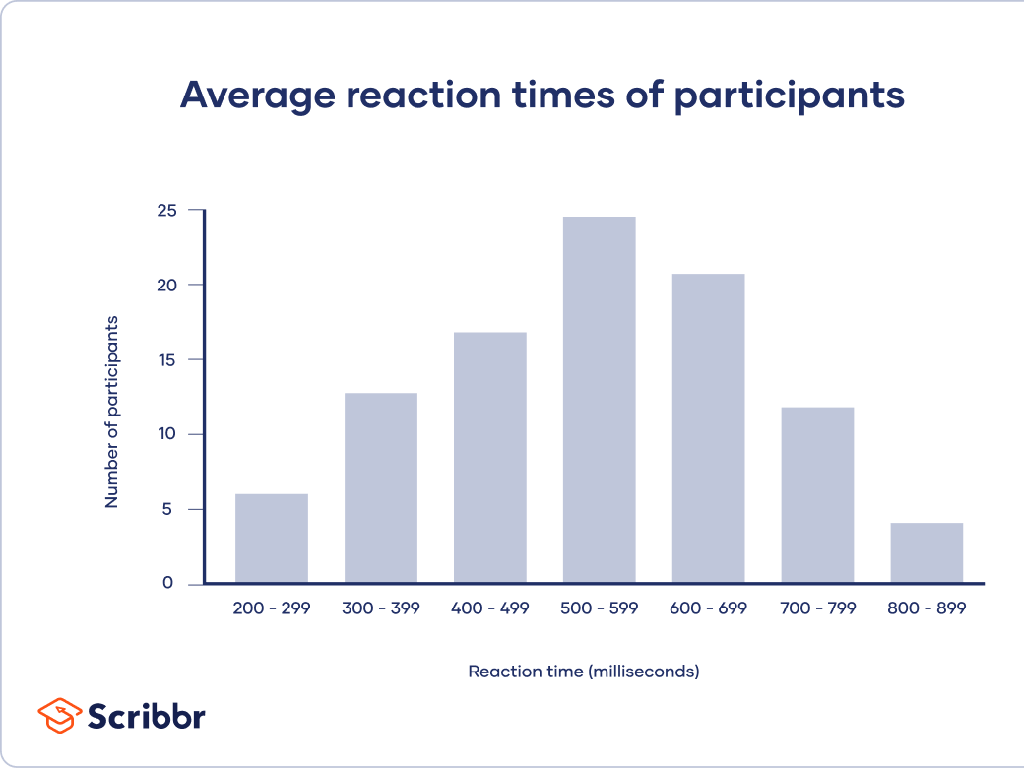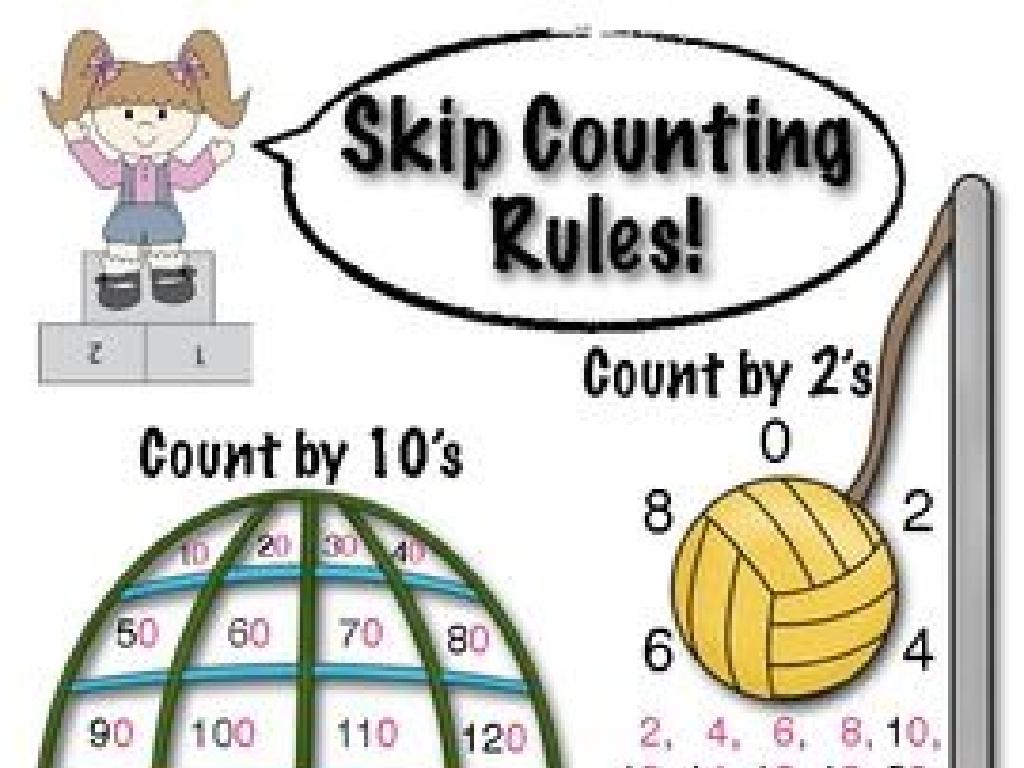Sort Factors Of Variable Expressions
Subject: Math
Grade: Seventh grade
Topic: Expressions
Please LOG IN to download the presentation. Access is available to registered users only.
View More Content
Sorting Factors of Variable Expressions
– Understanding variable expressions
– Expressions with variables represent numbers
– Defining factors in math
– Factors are numbers we can multiply to get another number
– Sorting factors of expressions
– Arrange factors in ascending or descending order
– Practice with examples
– Let’s sort factors for x^2 + 5x + 6
|
This slide introduces the concept of variable expressions and their factors to seventh-grade students. Begin by explaining that variable expressions are combinations of numbers, variables, and operations that represent a specific value. Clarify the definition of factors as numbers or expressions that, when multiplied together, result in a given number or expression. Teach students how to identify and sort these factors for variable expressions, emphasizing the importance of understanding the order and structure of algebraic expressions. Use the expression x^2 + 5x + 6 as an example to demonstrate how to find and sort its factors (1, x, x+2, x+3, x^2, 5x, 6). Encourage students to practice with additional expressions to solidify their understanding.
Understanding Variables in Expressions
– Define a variable in math
– A symbol for an unknown value, often a letter like x or y
– Variables in simple expressions
– For example, in 2x + 3, x is the variable
– Variables as number representatives
– In equations, variables stand in for specific numbers
– Practice with variable expressions
|
This slide introduces the concept of variables within the context of mathematical expressions. A variable is a fundamental element in algebra, acting as a placeholder for unknown values that can be solved for. Use simple expressions like 2x + 3 to illustrate how variables are incorporated into equations. Explain that variables allow us to represent numbers that we may not know yet and are essential for solving equations. Encourage students to think of variables as mystery numbers that they get to find out. Provide practice problems where students can identify variables and understand their role in expressions and equations.
Factors of Numbers
– Understanding factors
– Factors are numbers you can multiply together to get another number.
– How to find factors
– To find factors, look for pairs of numbers that multiply to give the number.
– Example: Factors of 12
– For 12, factor pairs are (1,12), (2,6), and (3,4).
|
This slide introduces the concept of factors in mathematics. Factors are the building blocks of numbers and are essential for understanding variable expressions. Start by explaining that factors are numbers that, when multiplied together, result in the original number. Demonstrate the process of finding factors with an example, such as the number 12. Show students how to list all possible pairs of whole numbers that, when multiplied, give 12. Emphasize that 1 and the number itself are always factors. This foundational knowledge will help students when they begin to sort factors of variable expressions. Encourage students to practice finding factors of different numbers as homework.
Sorting Factors of Variable Expressions
– Finding factors of expressions
– Break down expressions into products of simpler expressions.
– Factoring quadratic expressions
– For example, factor x^2 + 5x + 6 into (x + 2)(x + 3).
– Identifying factors
– Determine which expressions are factors of the original.
– Sorting factors methodically
– Arrange factors in ascending or descending order.
|
This slide introduces the concept of factoring variable expressions, a key skill in algebra. Start by explaining how to find factors, which are expressions that multiply together to give the original expression. Use quadratic expressions like x^2 + 5x + 6 as a common example, showing how to break them down into binomial factors. Teach students to identify all possible factors and then demonstrate how to sort these factors in a systematic way, either ascending or descending. Provide practice problems for students to apply these steps and reinforce their understanding of sorting factors of variable expressions.
Sorting Factors of Variable Expressions
– Sort factors in ascending order
– Arrange factors from smallest to largest
– Understand sorting usefulness
– Helps in simplifying expressions and finding GCF
– Practice: Sort factors of x^2 + 3x + 2
– Identify factors: (x+1)(x+2), then sort: 1, 2, x, x^2
|
This slide introduces the concept of sorting factors of variable expressions in ascending order, which is a crucial skill in algebra. Sorting factors can simplify the process of combining like terms and finding the Greatest Common Factor (GCF) for simplification or solving equations. The practice example provided will help students apply this concept by factoring the quadratic expression x^2 + 3x + 2 into (x+1)(x+2) and then sorting these factors. Encourage students to work through the example and verify their understanding by identifying and sorting factors for additional expressions.
Class Activity: Factor Sort Challenge
– Factor x^2 + 7x + 12 together
– Work in pairs for collaboration
– Sort factors into correct groups
– Arrange factors based on similarities
– Discuss the process and results
– Share your strategies with the class
|
This activity is designed to promote teamwork and enhance understanding of factoring variable expressions. Students will work in pairs to factor the quadratic expression x^2 + 7x + 12. They will identify factors such as (x+3) and (x+4) that multiply to give the original expression. After factoring, students will sort these factors, discussing their similarities and differences. Encourage them to communicate their thought process and problem-solving strategies. As a teacher, facilitate by guiding students who may struggle and ensure that each pair is actively participating. Possible variations of the activity could include factoring different quadratic expressions or having a friendly competition to see which pair can factor and sort correctly the fastest.
Review and Reflect: Sorting Factors of Expressions
– Recap of today’s key points
– Importance of sorting factors
Sorting factors helps simplify expressions, making them easier to understand and work with.
– Sorting factors in equations
It aids in identifying like terms and simplifying equations, which is crucial for solving them.
– Practical applications
This skill is useful in algebra, higher math, and real-life problem solving.
|
As we conclude today’s lesson, it’s important to review the key concepts we’ve covered about sorting factors of variable expressions. Understanding how to sort factors is essential because it simplifies complex expressions and allows us to identify like terms, which is a foundational skill in algebra. This skill is not only applicable in academic settings when solving equations but also in various real-life scenarios where problem-solving requires an understanding of mathematical relationships. Encourage students to reflect on how they can apply this skill outside the classroom and to come up with examples of where it might be useful in their daily lives.
Homework: Sorting Factors of Variable Expressions
– Practice sorting factors
– Work on 3 variable expressions
– Choose expressions with different complexities
– Understand each factor’s role
– Identify coefficients, variables, and constants
– Get ready for a quiz next class
– Review today’s lesson and practice problems
|
This homework assignment is designed to reinforce the day’s lesson on sorting factors of variable expressions. Students are expected to select three variable expressions of varying difficulty and sort the factors in each. They should pay attention to the coefficients, variables, and constants, and understand how each contributes to the expression. Encourage students to review their notes from today’s lesson and to complete additional practice problems if they need more clarity. Remind them that there will be a quiz during the next class, so thorough preparation is crucial. Offer some example expressions for different levels of difficulty to guide their practice.






